I spent most of the day today at The Thomas Fisher Rare Book Library, leafing through the volumes of Chatelaine magazine from the years 1956, 1966 and 1976. In this first installment, we are going back to the 1950s, when Chatelaine’s editors and managers were almost all men. Most of the contributors are women, but quite a few of either sex were Doctors of some kind or other, dispensing expert advice. Magazine has more illustrations than photographs and paper quality and colour differentiation isn’t very high (there’s a definite hue to these volumes). Certain Alice Laidlaw Munro has one of her first short stories published in Chatelaine this year. A lot of print inches are given to fiction - more than in subsequent decades - and this part of the magazine is lavishly illustrated.
Dr Marion Hilliard, Chief of the Service of Obstetrics and Gynecology at Women’s College Hospital is a frequent - though, she claims, reluctant - contributor (she donates her fee back to the hospital). The year opens with this long read addressing sexual anxieties of the newly wed women, most of whom are having sex for the very first time. What is normal? How to match desires and needs as partners? Are there seasons to sexuality? This genre will be popularized in later decades by TV figures like Sue Johanson and Dr. Ruth and still later by the sex advice columnists like Dan Savage. Dr Hilliard’s takes are an unusual mix of worldly, friendly, and what we would now see as sexist.
Dr. Hilliard returns with advice to single women. Can they live a "happy, useful life” without a husband and children? First English translation of The Second Sex is by now 3 years old but it might have not reached Toronto, Ontario. Like a lot of the pieces in the 1950s Chatelaine, this one is a strangely compelling read, and you can see different theories from the past and the future jostling for primacy. The tenor of the piece is, Yes, it’s unfortunate, but you’ll learn how to live with it and make most of it (“make your home as beautiful for yourself as you would for a family” is one piece of advice). You should absolutely not attempt to raise a child on your own, even if an opportunity presents itself. (That single parenthood ‘harms’ the child seems to have been a matter of consensus.) And both unmarried women and mothers, she concludes, will meet again in their fifties when their lives will begin to resemble again.
Ooops. March is the scolding month. “Why you bore your husband” by one Dr Blatz. The essence is: don’t be JUST a housewife! Educate yourself. Go back to your piano lessons that you abandoned when you got married. Find common areas of interest with your husband (African art, tennis) and grow together
There’s an interesting dynamic in these pages between the aspiration to work outside the home (there’s an implicit understanding that it’s A Good Thing for everyone in the family) and the fact that most Chatelaine readers just like most married women in Canada - did not, and had enough to do *inside* the home. An uneasy truce of “both could be valid” is detectible in every issue, even though most of the content is focused on how to be a domestic goddess.
Again this dynamic: wives have what every woman wants, but this “gift” eats them up and turns them into bores.
Half of the issue is of course recipes and domestic tips, though photography, when present, is rudimentary. Budgeting and extensive meal planning including calendars and grids are not unusual.
Another piece on the work-home dialectic: a retiree who moved to a small town but took on volunteer board appointments and finds herself busier than ever:
More second thoughts on the life as a housewife (October 1956):
Women of Edmonton and Women of Toronto are just two in the series of “Women of…” featuring gals in interesting jobs. Francis Loring and Florence Wyle shown below in their studio near St Clair, and some of you will recognize the engraved female figure at the back which now lives at the AGO.
December/Christmas issues are always special. This one features Pearl Buck and GB Shaw, and cover photography by Yousuf Karsh.
Next: 1966, the year leading up to the Centennial. Doris Anderson is editor in chief.





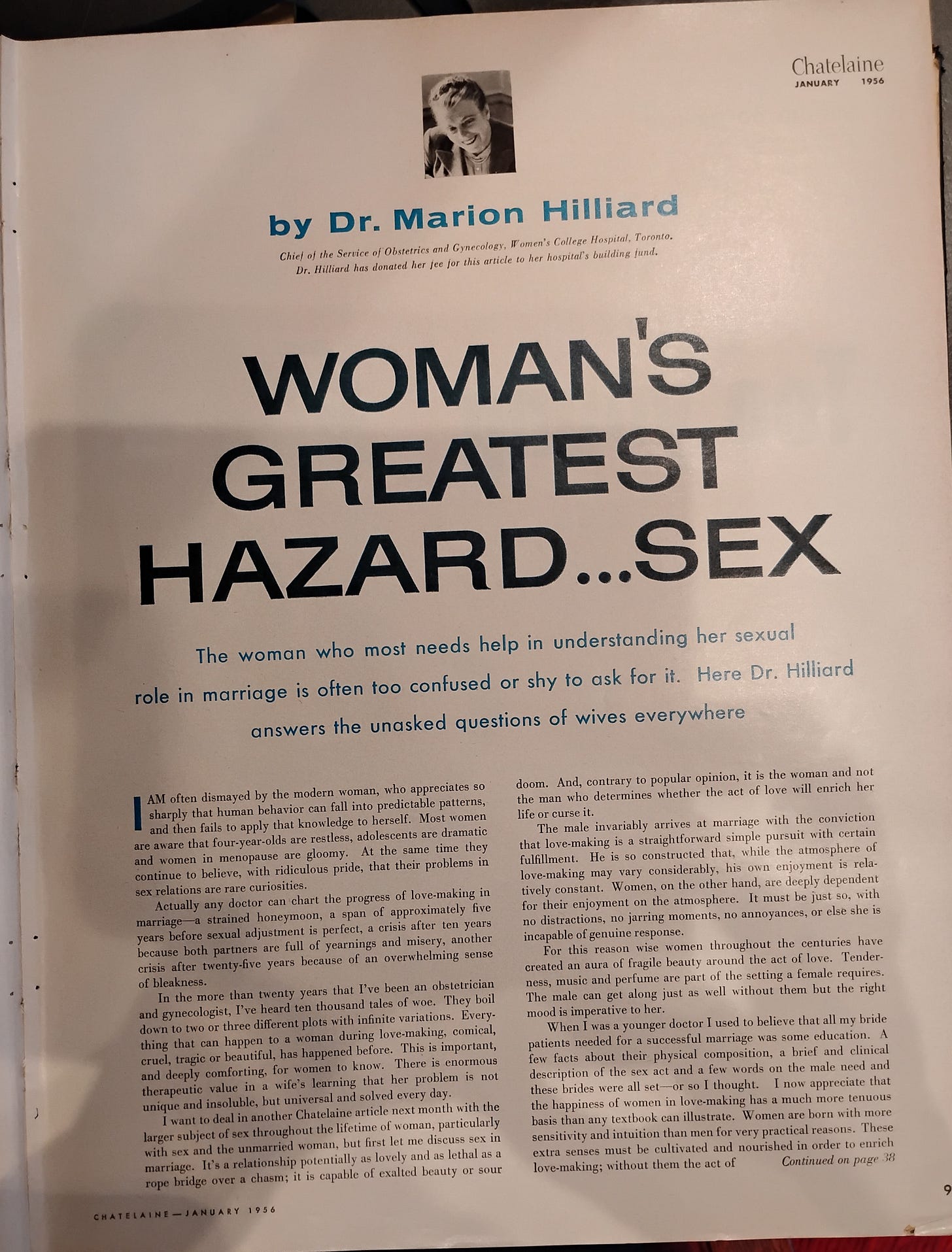
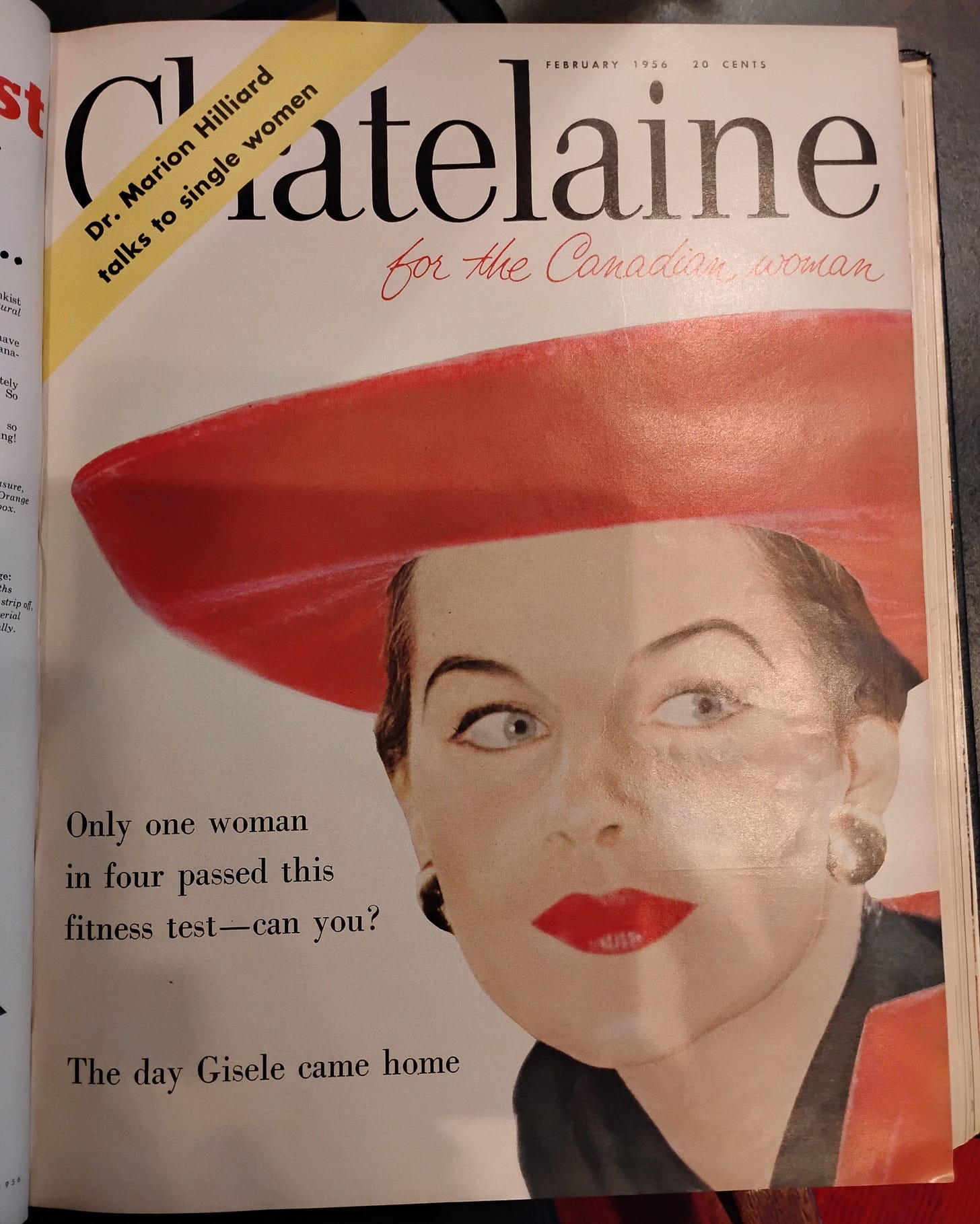


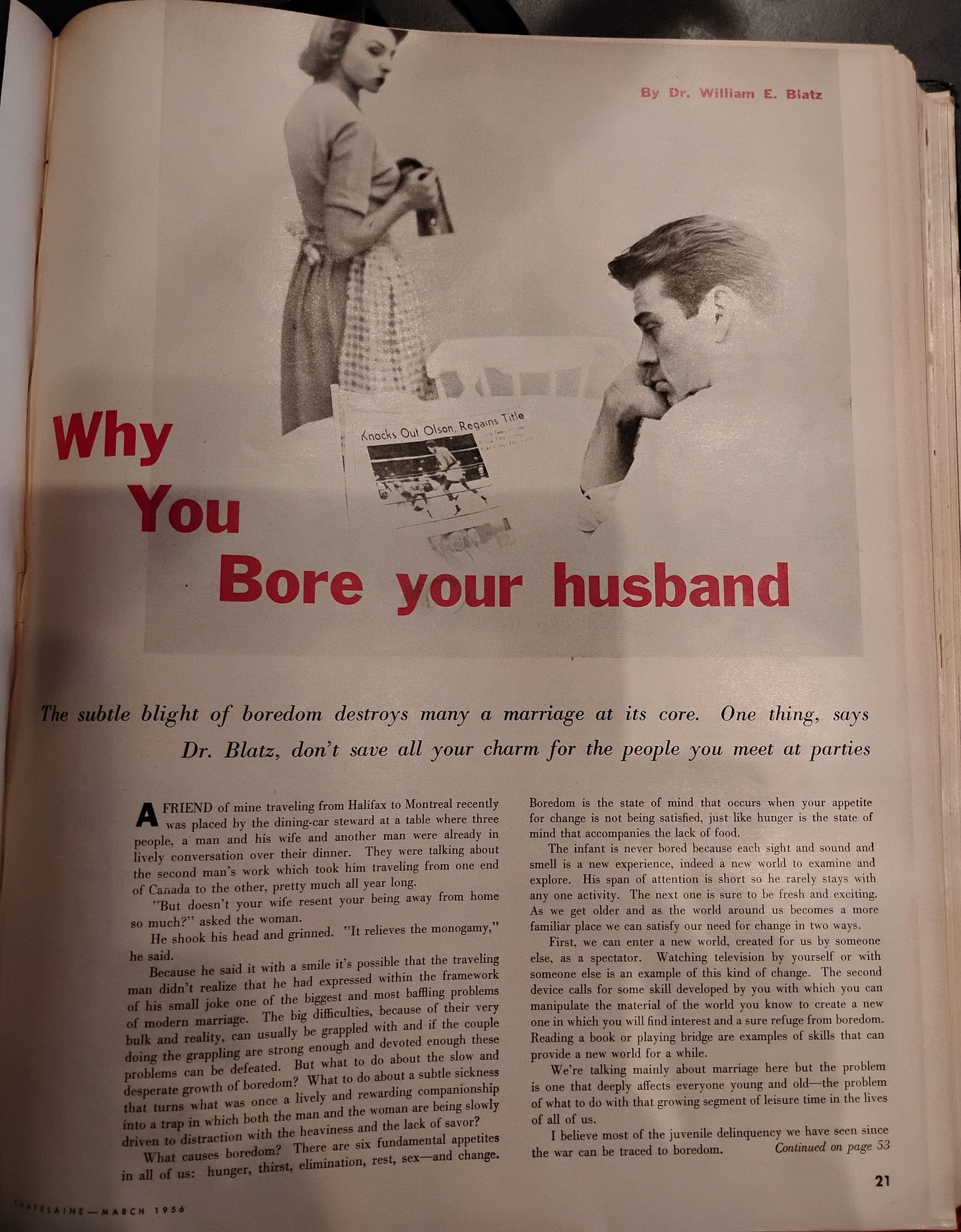
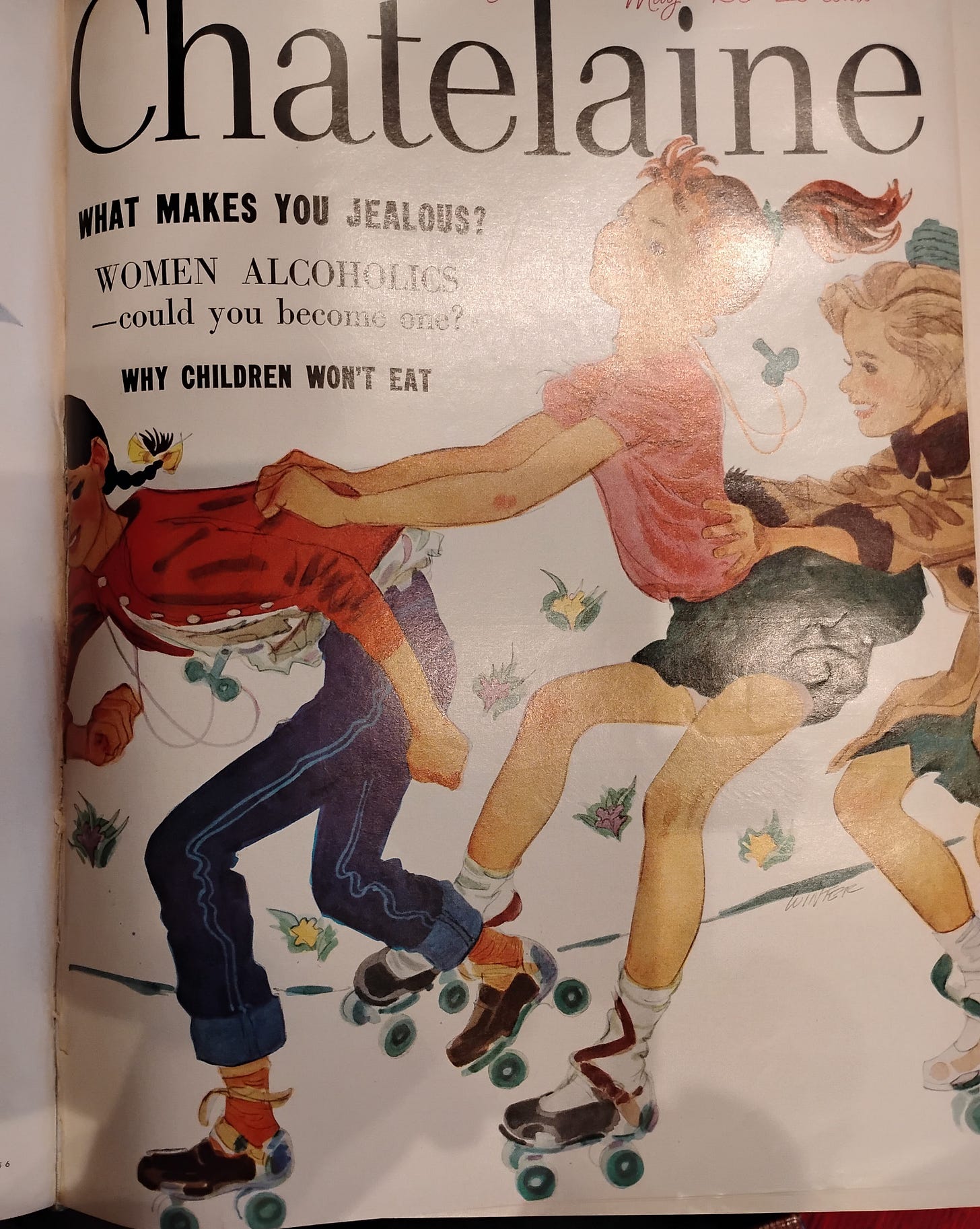



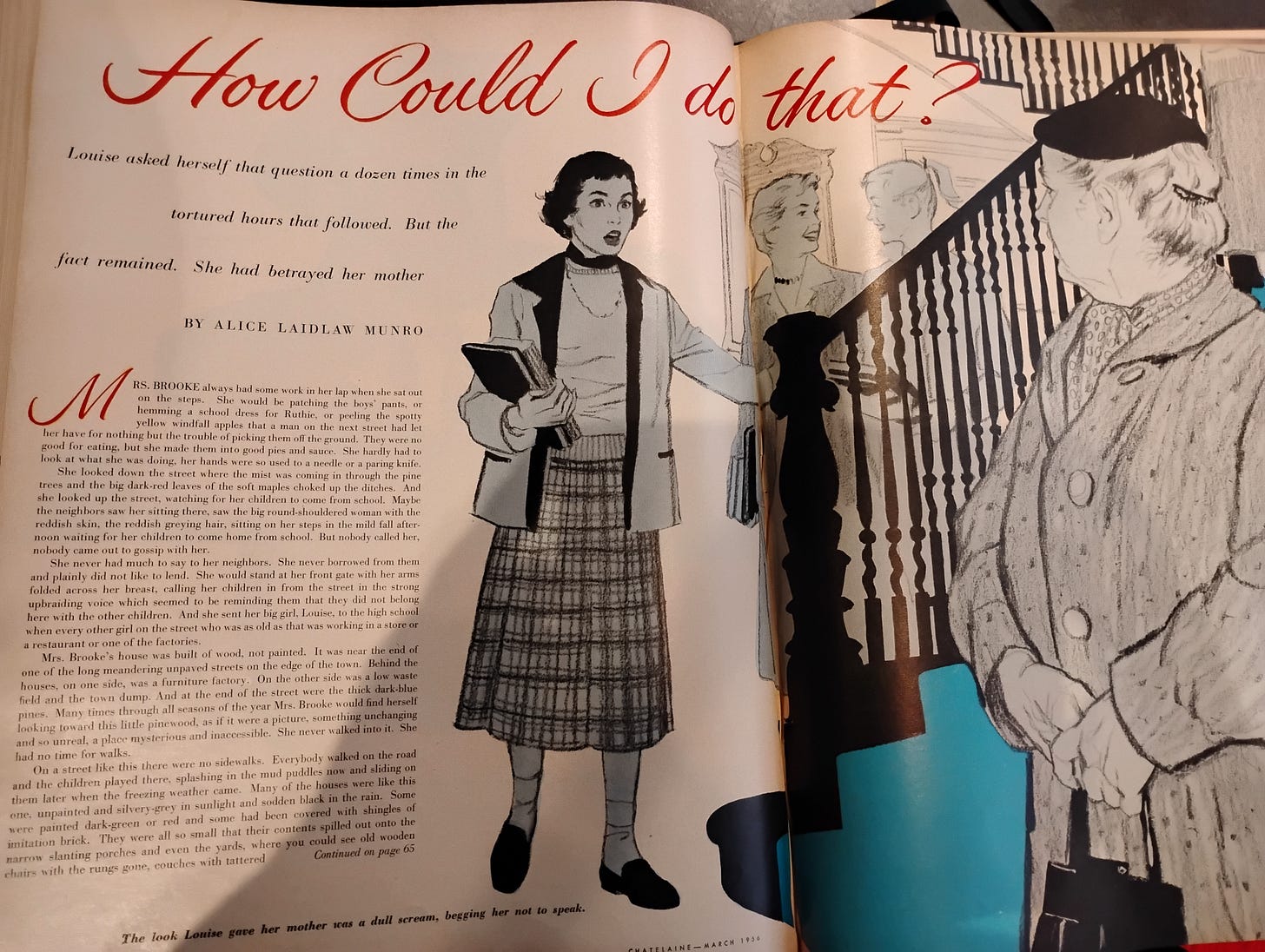
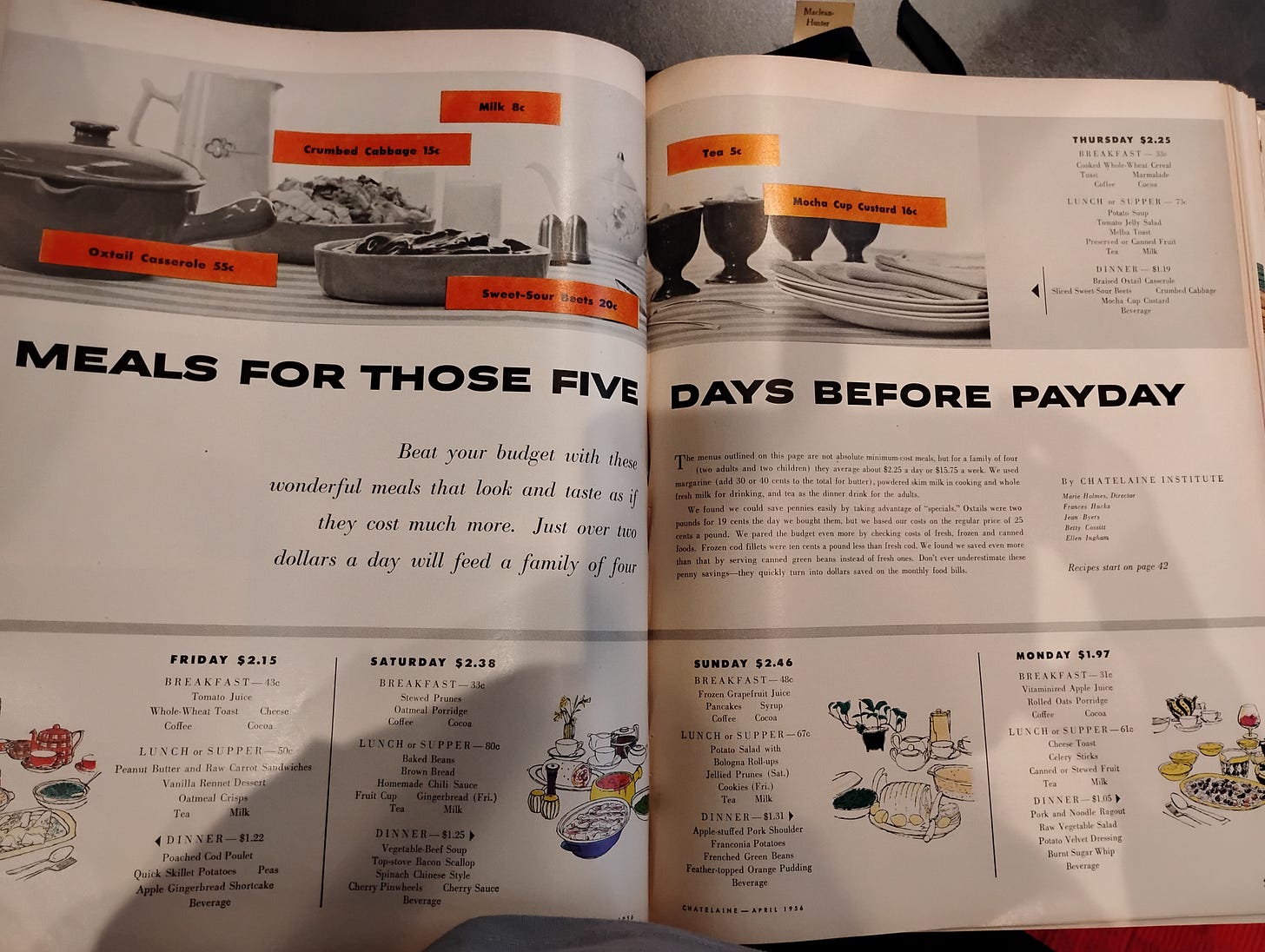



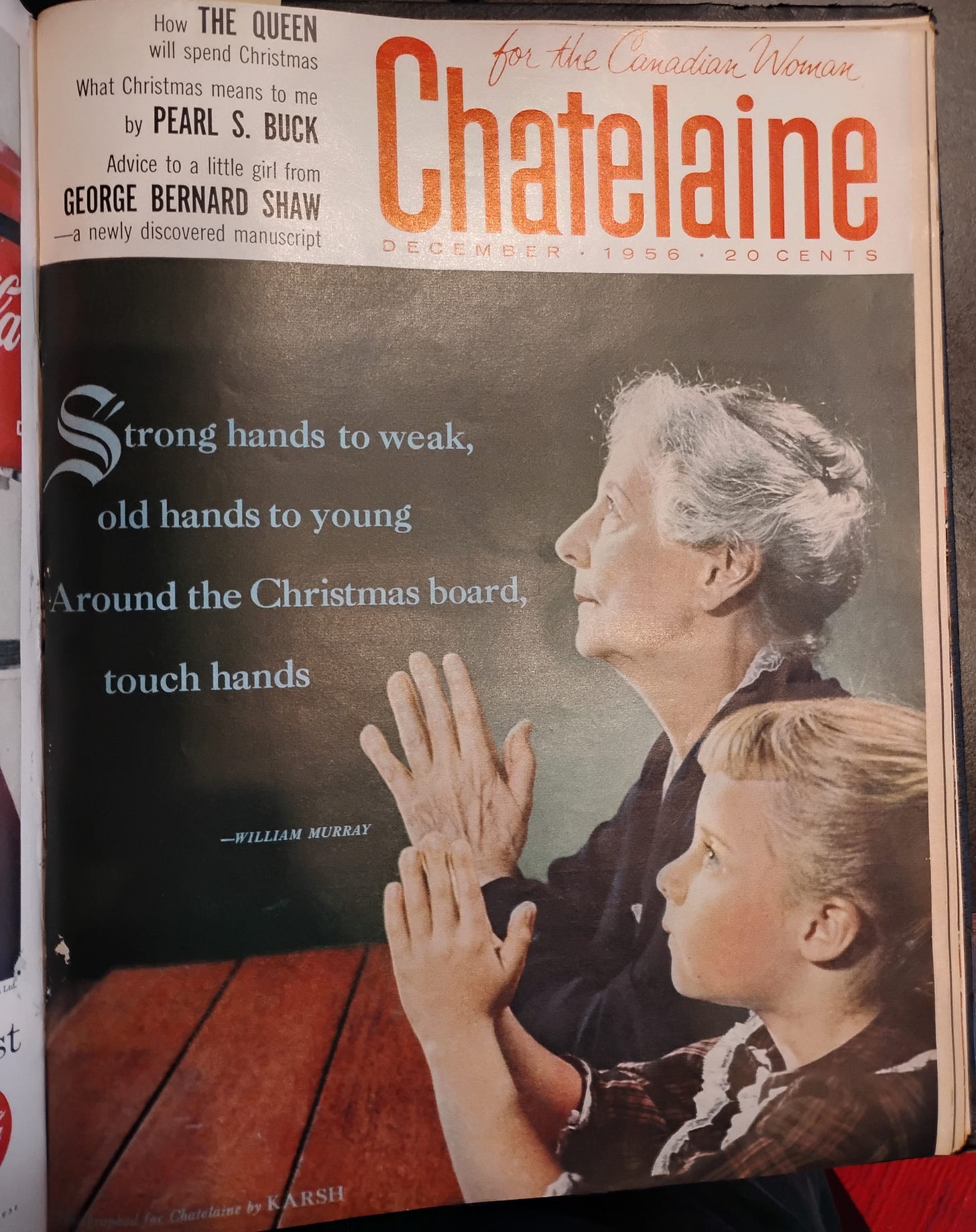

Love it. Thanks.